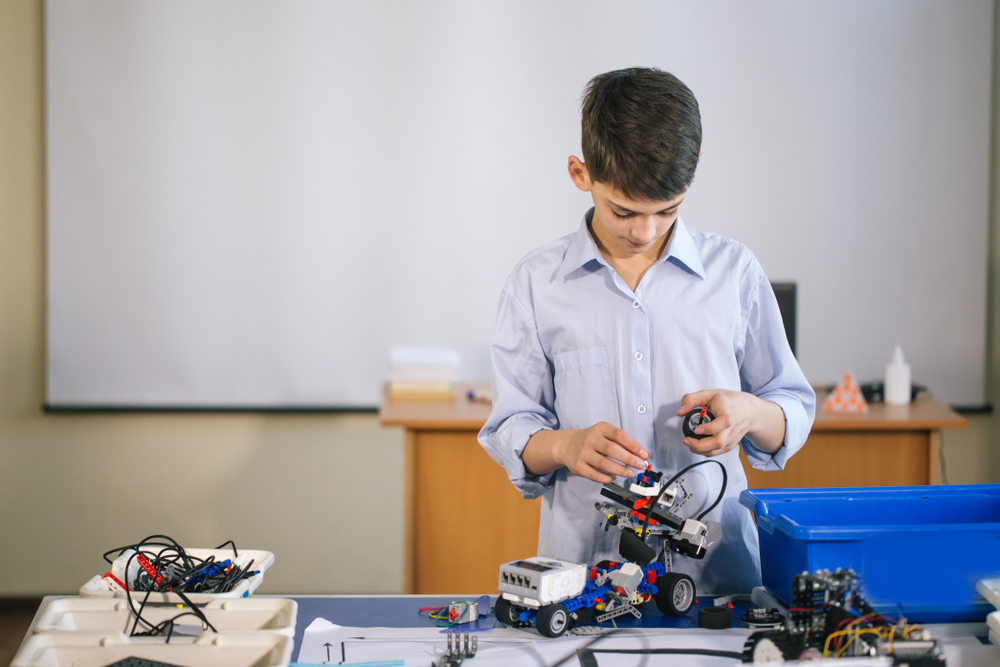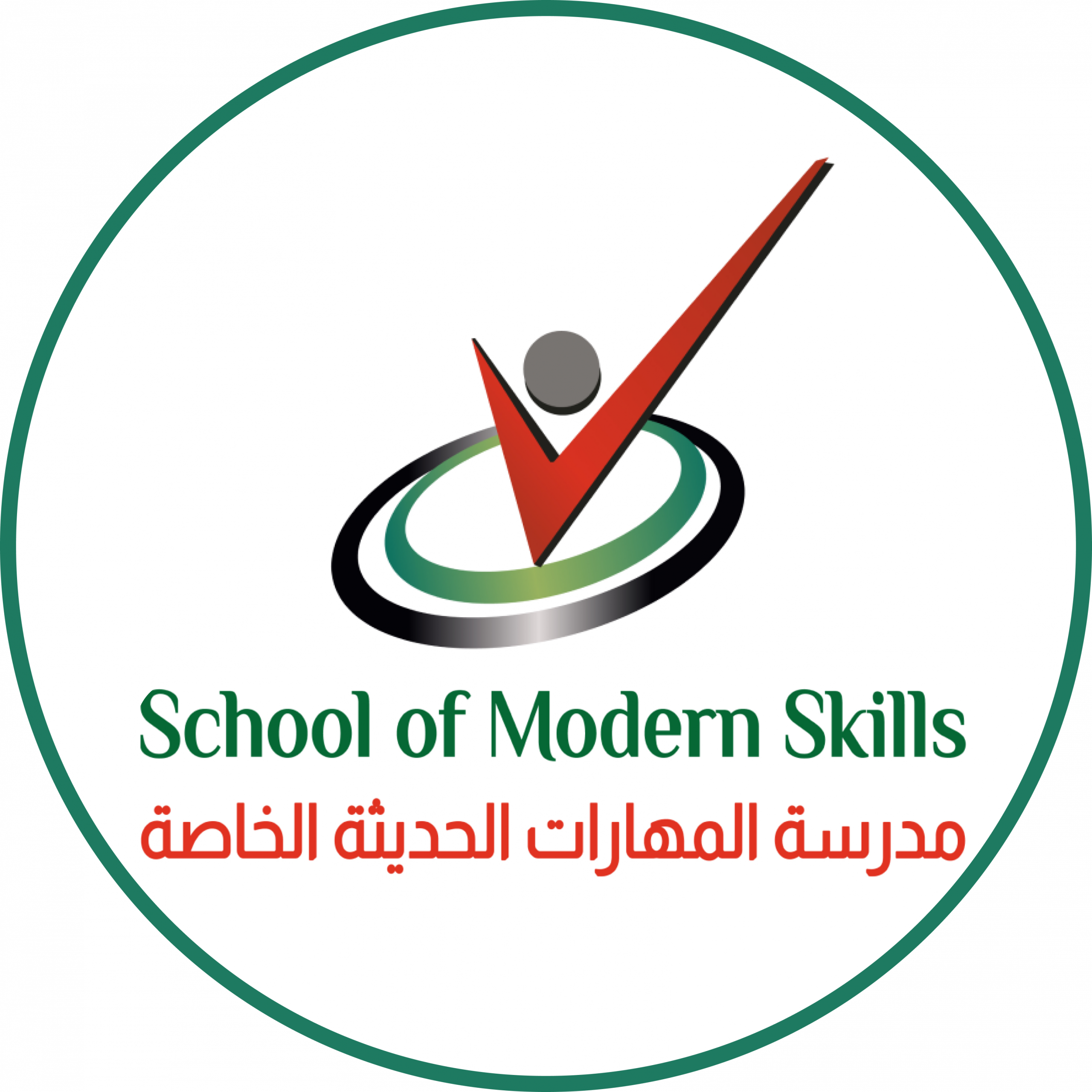
Robotics, when used in the classroom to enhance learning, and taught to children in robotics classes, is a great benefit for many reasons. Let’s look at how robotics, from AI to VR and programming can make learning interactive, fun, and teach valuable skills.
Why Should Robotics be Taught in Schools?
Robotics can be used in the classroom to enhance children’s learning, not just by teaching them about technology, but also using this technology to personalize their studies for each child’s benefit. While robots won’t replace teachers, AI will enhance the learning experience for all children. Here are some reasons that robotics should also be taught in schools.
Preparing for Advancing Technology
Robotics classes play a crucial role in preparing children for the rapidly advancing technologies they will encounter in the modern world. As technology becomes increasingly integrated into every aspect of life, understanding how it works is essential for future success. Robotics education introduces students to fundamental concepts in science, technology, engineering, and mathematics (STEM), providing them with a strong foundation in these critical fields.
By engaging with robotics, students learn to program and control machines, gaining firsthand experience with automation and artificial intelligence. This hands-on learning approach helps them understand complex technological processes, making them more adaptable to new tools and innovations. As automation and AI continue to reshape industries, the skills acquired in robotics classes will be invaluable for future careers, from engineering to healthcare.
Additionally, robotics education fosters critical thinking, creativity, and problem-solving skills. Students are encouraged to design, build, and test their robots, promoting innovative thinking and resilience in the face of challenges. These skills are essential in a world where technology continuously evolves, requiring individuals who can adapt and find creative solutions.
Furthermore, robotics classes emphasize collaboration and teamwork, as students often work in groups to tackle projects, learning the importance of communication for success. By equipping children with these skills and experiences, robotics education ensures they are well-prepared for the technological advancements and challenges of the future.
Job Prospects
Robotics classes in schools significantly enhance children’s job prospects by equipping them with valuable skills that are increasingly demanded in the modern workforce. As the technology industry booms and our capabilities change rapidly, businesses across the globe seek individuals who possess strong foundations in STEM. Robotics education provides students with practical experience in programming, engineering, and problem-solving, all of which are crucial for careers in technology-driven fields such as software development, engineering, and automation.
Additionally, exposure to robotics can inspire interest in high-demand tech careers, encouraging students to pursue further education and specialization. The combination of technical expertise and soft skills significantly enhances their employability and adaptability in a competitive job market.
Engaging Study
Robotics makes learning interactive and enjoyable for children by turning abstract concepts into tangible experiences that engage multiple senses and spark curiosity. Unlike traditional lectures, robotics education involves hands-on activities where students design, build, and program robots, allowing them to see the direct results of their efforts. This approach is dynamic and rewarding, encouraging students to experiment and learn through trial and error, fostering a deeper understanding of scientific and mathematical principles.
AI and VR further enhance this experiential learning by providing interactive environments that simulate real-world scenarios. Robotics also promotes creativity and innovation, as students can customize projects to reflect their interests. This encourages exploration and self-expression through unique creations, such as robots resembling animals or programmed games.
Additionally, AI makes learning more engaging by adapting lessons to each student’s needs. Teachers can use AI to provide personalized feedback and resources, tailoring the educational experience to individual learning styles.
The Importance of Interactive Learning

Interactive learning is crucial for children as it actively engages them in the learning process, making education more dynamic and effective. Unlike traditional learning methods, which often rely on passive listening and memorization, interactive learning involves hands-on activities, discussions, and real-time feedback. This approach caters to diverse learning styles, helping students to understand and retain information better.
When children are actively involved, they are more likely to develop critical thinking skills, creativity, and the ability to apply knowledge in practical situations. Interactive learning also enhances motivation and enthusiasm, as students find learning more enjoyable and relevant to their interests and experiences.
What’s more, interactive learning fosters collaboration and communication among students, utilizing group projects. This not only improves student’s social skills but also prepares them better for their futures in work and social activities. Through interactive learning, children learn to respect diverse viewpoints and develop the ability to articulate their thoughts effectively, building a foundation for lifelong learning and adaptability.
Robotics education is an excellent example of interactive learning. It immerses students in hands-on experiences where they design, build, and program robots. This interactive approach allows students to experiment and learn through trial and error, deepening their understanding of complex concepts.
Robotics education stimulates curiosity and innovation, as students explore the possibilities of technology and engineering. By engaging in collaborative projects, they also develop problem-solving skills and learn to communicate effectively with peers. Through robotics, children experience the power of interactive learning, gaining skills that are vital for success in an ever-evolving world.
Robotics tools like VR, also make children more involved in their learning, in a fun and novel way.
How are Robotic Tools Used in Schools?
The use of AI and VR in classrooms significantly enhances teaching by providing personalized and immersive learning experiences. AI-driven tools can analyze students’ performance in real-time, allowing teachers to tailor lessons to meet individual needs.
This personalization helps address specific learning gaps and ensures that each student progresses at their own pace. Additionally, AI can automate administrative tasks, freeing teachers to focus more on instruction and student engagement.
VR offers students immersive experiences that bring abstract concepts to life. For example, in a history class, students can explore ancient civilizations, while in a science class, they can witness complex biological processes in 3D. These experiences make learning more engaging and memorable, enhancing students’ understanding and retention of information.
In Dubai, some schools have successfully integrated AI and VR into their curricula, transforming how subjects are taught. These technologies not only boost student motivation and engagement but also equip them with critical skills for the future, fostering an innovative learning environment.
About Dubai School of Modern Skills
At Dubai School of Modern Skills, we prioritize integrating technology into students’ lives early on to improve digital literacy and spark interest in tech, paving the way for future career paths. Our campus boasts cutting-edge technology and offers robotics and STEM courses as part of our dynamic American curriculum, which also utilizes AI tools to enrich classroom learning experiences.
In addition to English, our curriculum includes Arabic and French, helping students navigate life in Dubai and abroad. This multilingual education prepares students for a global environment and enhances their communication skills.
Our academic year follows a typical schedule with summer and winter breaks. We have implemented a school uniform that respects local traditions and aids in student identification, enhancing campus safety.
We implement comprehensive health and safety protocols to prevent accidents and emergencies, while our dedicated transportation service focuses on ensuring student safety.
For parents interested in learning more about their child’s school experience, we provide a parent inquiry form. This tool allows parents to engage with the school and stay informed about their child’s educational progress and activities.
Our Vision
Dubai SMS’s vision is to empower students to succeed academically, socially, and personally by nurturing creativity and critical thinking through our innovative curriculum. We provide state-of-the-art facilities that enhance learning experiences, including a medical care center, sports clubs, and spaces for diverse extracurricular activities. These resources support students in developing essential skills for the future.
Ready to Take a Tour?

For more information on our academic facilities or to arrange a tour of our school so you can see the quality of our classrooms and the excellent resources available to our students, please contact us today to speak with a team member.
